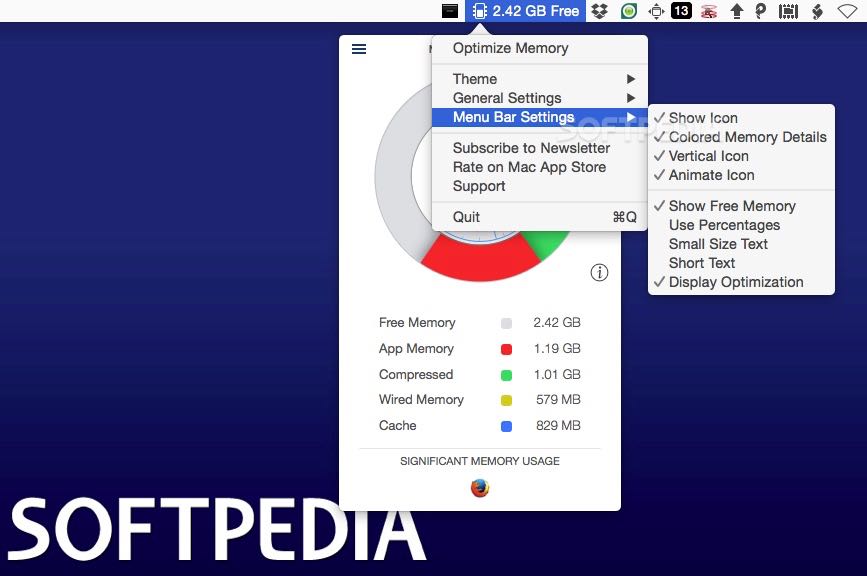

- Memory monitor xp full#
- Memory monitor xp software#
- Memory monitor xp code#
- Memory monitor xp windows#
It is regenerated at each boot - there is no need to include it in a backup. The page file in XP is a hidden file called pagefile.sys. That is not true, and these programs often result in reduced performance and may result in run-away growth of the page file. Programs that purport to ‘manage’ or ‘free up’ RAM are pandering to a delusion that only such ‘Free’ RAM is available for fresh uses.
Memory monitor xp windows#
That term is a misnomer - it ought to be ‘RAM for which Windows can currently find no possible use’. Thus there should rarely be any significant amount of RAM ‘free’. But these uses will be dropped instantly should some other use come along. Anything left over will be used to cache further files - just in case they are needed.
Memory monitor xp code#
If nothing else it will retain code of programs in RAM after they exit, in case they are needed again.

Windows will always try to find some use for all of RAM - even a trivial one.
Memory monitor xp software#
It is, though, possible that external utility software ( e.g. Because this mainly contains core code of the system, which is not likely to contain serious faults, a Blue Screen referring to ‘Page Fault in Non-Paged area’ probably indicates a serious hardware problem with the RAM modules, or possibly damaged code resulting from a defective Hard disk. Parts of the System which are so important that they may never be paged out - the area of RAM used for these is called in XP the ‘Non-Paged area’. If there is pressure on space in RAM, then parts of code and data that are not currently needed can be ‘paged out’ in order to make room - the page file can thus be seen as an overflow area to make the RAM behave as if it were larger than it is. This will be a fatal error if detected in a program: if it is seen within the system itself (perhaps because a program sent it a bad request to do something), it may manifest itself as a ‘blue screen’ failure with a STOP code: consult the page on STOP Messages on this site. The system then has an ‘Invalid Page Fault’ error. Sometimes, through program or hardware error, the page is not there either. This - a valid page fault - normally happens quite invisibly. This asks the system to retrieve the 4 KB page containing the address from the page file (or in the case of code possibly from the original program file). When a program tries to access some address that is not currently in physical RAM, it generates an interrupt, called a Page Fault. Other parts are then held in a swap file (as it’s called in Windows 95/98/ME: Win386.swp) or page file (in Windows NT versions including Windows 2000 and XP: pagefile.sys). Only those parts of the program and data that are currently in active use need to be held in physical RAM. The processor manages the mapping in terms of pages of 4 Kilobytes each - a size that has implications for managing virtual memory by the system. The processor itself then translates (‘maps’) the virtual addresses from an instruction into the correct physical equivalents, doing this on the fly as the instruction is executed.
Memory monitor xp full#
32 binary digits allow the representation of 4,294,967,296 numbers - counting 0.) So the hardware provides for programs to operate in terms of as much as they wish of this full 4GB space as Virtual Memory, those parts of the program and data which are currently active being loaded into Physical Random Access Memory (RAM). This is normally far more than the RAM of the machine. Other pages on this site are written mainly for Windows 98/ME (see Windows 98 & Win ME Memory Management) and, while a lot is in common, there are significant differences in Windows XP.Ī program instruction on an Intel 386 or later CPU can address up to 4GB of memory, using its full 32 bits. This page attempts to be a stand-alone description for general users of the way Virtual Memory operates in Windows XP. © 2002-2005 by Author, All Rights Reserved Introduction (MS-MVP - Windows Storage Management/File Systems) Hold mouse here for list of most recent changes. Version 1.6 - Last Updated February 21, 2006


 0 kommentar(er)
0 kommentar(er)
